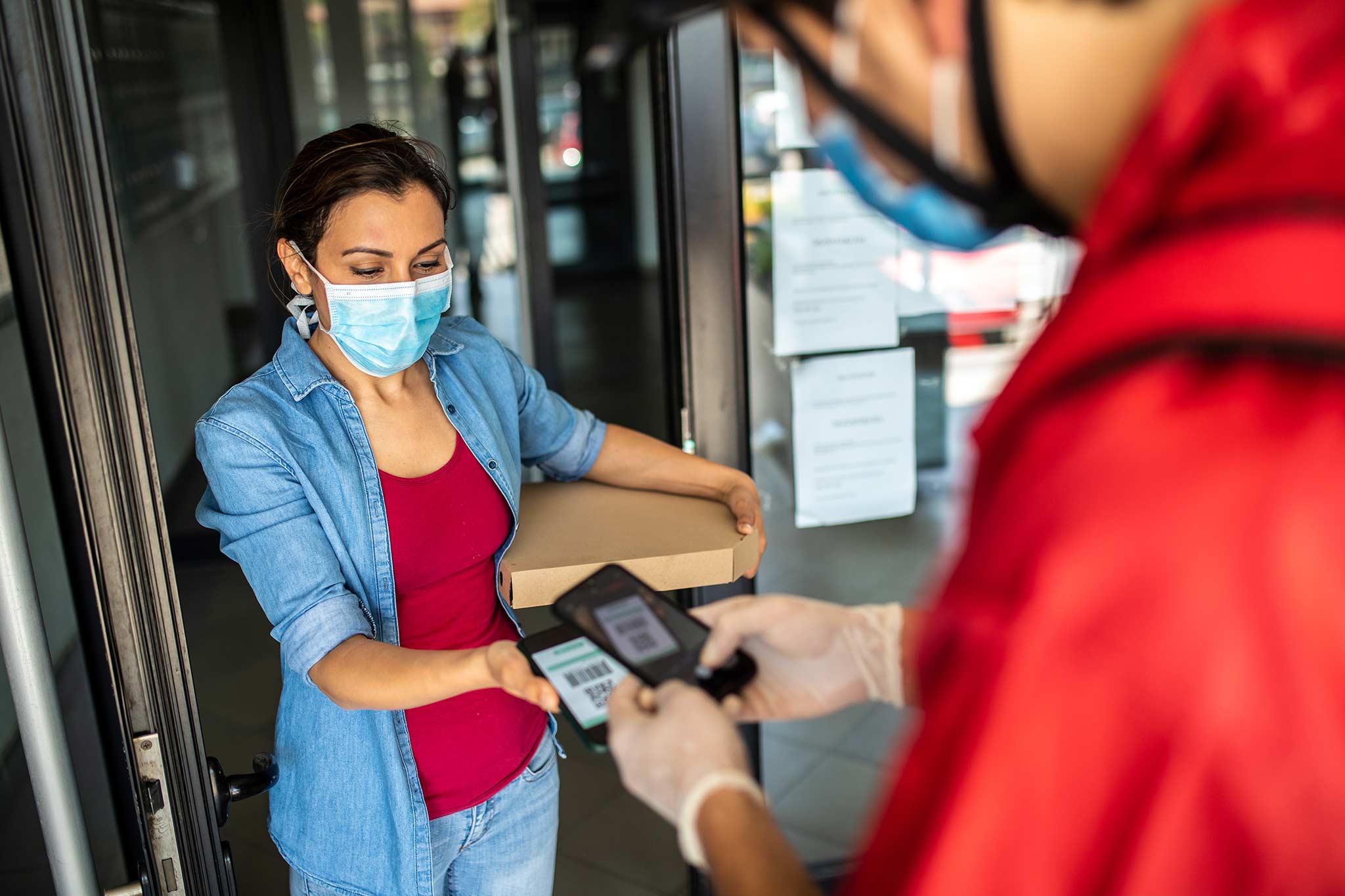
Reinventing Business Models
The New Global Business Order
The virtual world has become a reality for millions around the world since the onset of the pandemic. More than a year-and-a-half into the “new normal”, national and international travel is restricted for many—so many people continue to largely work, shop, and socialize online.
According to global consulting firm Bain & Company, Asia-Pacific consumers are already shopping online via their phones. Forrester is forecasting that smartphone usage, particularly in China and India, will account for 81% of online retail sales in 2023. The pandemic has reshaped perceptions of what matters to consumers. Brands need to ask: How do we keep up?
As businesses reconsider their digital strategies, five distinct business models have emerged that will be integral to the evolution of commerce in a post-pandemic world. These are subscriptions, cross-border business, collaborative ads, apps, and conversational commerce.
Today’s consumers are not only spending more time online but also increasingly buying a wider range of products and services digitally. Businesses large and small have responded by pivoting to e-commerce. Digital transformations has accelerated: In Southeast Asia, the digital consumer adoption that was supposed to occur in 5 years has already exceeded 2025 forecasts within 12 months. Those thriving overhauled their business models to reach customers where they already spend their time: on mobile apps and social media.

Businesses of all sizes are leveraging Meta technologies to reach and engage consumers in different ways. Taiwanese shoe retailer D+AF saw a boost to online sales in new markets, while Instant Game developer Knock Knock Games improved customer retention, and global cosmetics conglomerate L’Oreal was able to explore a new brand partnership with cosmetics retailer Sephora, leading to an increase in sales in a niche market like Singapore.
In a Facebook commissioned survey1, 74% of consumers globally say they get shopping ideas from Facebook, Messenger, Instagram, or WhatsApp. 66% of consumers agree that social media has become as important as other information sources when making purchase decisions.
The home-centric lifestyle has driven a huge surge in e-learning, gaming, ecommerce, and food delivery platforms. There is momentum for more disruptors to thrive now.
Prajit Nanu, co-founder of global payments platform Nium
“As consumers become more open to disruption, we will add more functionalities to our apps that will support activities such as gaming, stock-trading, and other features to boost on-app usage.” says Prajit Nanu, co-founder of global payments platform Nium.
The Small Business Revolution
Small and medium businesses (SMBs) form the backbone of the global economy, but for many, their lack of digital presence puts them at risk of becoming another casualty of the pandemic. But for those who chose to transform their business models almost overnight, the rewards became clear just as quickly.
Christy Ng—a Malaysian fashion brand—found that early on when the pandemic forced the business to shut its brick-and-mortar shops for an extended period.
“Being agile is key to survival having the right tool and system during the pandemic is critical and instrumental for survival and success,” CEO Christy Ng shares. “The pandemic comes as a blessing in disguise as it pushed us to migrate to an integrated omni-channel system.” Her new advertising and marketing strategy paid off: “Without Facebook, we wouldn’t have the 8 brick and mortar shops in Malaysia and an online customer base from over 30 different countries today.”

Like Ng, entrepreneurs everywhere are reinventing their businesses and exploring new ways to reach customers. Building a resilient modern business will help it thrive in a world committed to e-commerce and digital technology. Today, her namesake brand is planning for the grand opening of its first store in Vietnam.
Social media has opened doors for us we never imagined possible. It’s a proud moment for us as we never would have imagined a local brand like us from Malaysia would be able to sell cross borders both digitally and physically.
Christy Ng, CEO
Businesses in Asia Pacific that historically trailed their North American and European counterparts in digitalization are now running with the opportunity and are adapting to changing consumer behavior and preferences. According to a 2020 IDC-Cisco study, nine out of 10 SMBs in Asia Pacific became more reliant on technology during Covid-19, and almost 70% are accelerating digitalization. This could add up to $3.1 trillion to the region’s economy by 2024.
As digital technology reshapes consumer behavior, new business models are emerging while some time-tested ones are evolving to find renewed relevance among a new generation of consumers.
The following five distinct business models are growing in importance as businesses begin to rethink transform to meet consumer expectations of shopping online.
Transform Businesses With: Subscriptions
Today’s digital consumers prefer to pay for using products and services at their convenience rather than being burdened with outright ownership of things they might soon outgrow or lose interest. Businesses realize that by providing customers the kind of flexibility they desire, combined with the right engagement, they can create loyalty, gain better insights into their customers and secure a more predictable stream of recurring revenue.
This has created a new ‘Subscription Economy’ that provides access to products and services as diverse as cars, fitness, and education, among others.
According to Zuora, a billing software provider, companies in the subscription economy experienced seven times faster revenue growth than S&P 500 companies in the fourth quarter of 2020 alone. A Citigroup survey of 580 senior business executives in Asia Pacific found that nearly half the respondents expect subscription-based models to be widely adopted in their industries within three years and become the mainstay.
One of the most significant positive impacts subscriptions have on our business is that it ensures consistent baseline revenue irrespective of fluctuation in new user acquisition.
Shivam Sharma, co-founder of personalized skincare brand, Yours
“As the Cost Per Thousand Impressions (CPMs) and Customer Acquisition Cost (CAC) continue to get more expensive, especially during holiday seasons, subscription revenue gives us the flexibility to hold back on ad spend during that period without taking a huge hit,” shares Sharma.
Transform Businesses With: Cross-Border Commerce
While country after country suffered double-digit economic contractions amid the pandemic, some companies have found new ways to survive and thrive by finding people in new markets as their domestic markets continued be challenging.
Payments processor Worldpay estimates that global e-commerce transactions increased by 19% to $4.6 trillion in 2020, of which $2.4 trillion was in Asia Pacific alone. Facts & Factors projects the value of e-commerce in the region to increase by almost two-thirds to $4,280 billion by 2026.
Year-end mega sales moments present opportunities for brands to consider new markets. In a 2019 Facebook Seasonal Holiday Study by YouGov, 64% of shoppers reveal they explore new products during the holidays more than the rest of the year.
Businesses have leveraged e-commerce, digital payments, global supply chains, and social media advertising to extend their geographic reach. Australian health product distributor Rose-Hip Vital Canine, for example, broke into the US market with cross-border ad solutions and saw a 30% increase in landing page views. Taiwanese beverage brand Nature Fruit expanded into Malaysia and earned a 50% greater return on ad spend deploying the same solutions.
Facebook’s marketing and targeting solutions are a great way to conduct cross-border business, helping even small, family-run brands like us reach a new global audience.
Justin Diamond, director, Rose-Hip Vital
Transform Businesses With: Collaborative Ads
The surging popularity of online shopping has created opportunities for brands to collaborate with e-commerce platforms.
Seamless integration between online marketplaces and Meta technologies allows customers to discover products where they spend the most time. As more businesses go online as part of their post-pandemic strategy, collaborative ads can enable businesses of all sizes to overcome infrastructure constraints. Consumers are matched with products relevant to their interests via ad campaigns on Meta technologies and they can directly purchase from online marketplaces that can fulfil their orders. This allows brands to meet their customers where they spend the most time and discover products, and drive sales on a retailer’s website or mobile app.
Senka, a Japanese skincare brand, achieved a 67% increase in add-to-cart actions and a 37% lift in purchases by running Collaborative Ads offered by Meta with e-commerce platform Momo in Taiwan. Japanese personal care brand KOSÉ similarly increased its presence in Southeast Asia by running ads featuring KOSÉ’s product catalogue on Lazada, a popular ecommerce platform in Southeast Asia. Footwear brand Havaianas used this strategy to make up for the loss of foot traffic in its physical stores during the pandemic and encouraged shoppers in the Philippines to buy from its online stores on Shopee and Lazada.

It’s proven how mobile-first creative and Facebook Collaborative Ads are critical in driving positive business results and can help traditional FMCG brands extend their presence in the ecommerce world. We’ll continue to leverage well-crafted creative in future campaigns.
Cherry Hsu, marketing manager, Senka
Transform Businesses With: Mobile Apps
Ubiquitous and indispensable smartphones have created a “app-first” world where people use apps for almost everything: from shopping to banking, food delivery, healthcare, government services, and entertainment. They are an essential channel for connecting and engaging with consumers.
According to Criteo’s 2020 Global Apps Survey, retailers with a shopping app hold a 75% share of app sales. It was reported that 55% of shoppers in APAC downloaded at least one shopping app during the peak of the pandemic.
It has never been more important for businesses to make apps a crucial component of their go-to-market strategy and, equally, to ensure customers become aware of and download their widgets. Appsflyer, a mobile marketing analytics provider, projects robust growth in app-install ad spend to double from $57.8 billion in 2019 to $118 billion in 2022 as more of the developing world comes online.
Babitalk, a South Korean mobile app that provides cosmetic and plastic surgery information, has a current user base of 4.2 million users with a daily 50,000 active users. Prior to the app’s availability, people looking for information on cosmetic and plastic surgery had to trawl through various time-consuming sources.
“Given these challenges despite the huge size of the Korean plastic surgery market, I saw an opportunity to provide a service that can make it easier for potential consumers to gain information during their decision making process,” shares Shin Ho-Tack, CEO, Babitalk.
Having an app-based business model is superior to a web-based model in terms of enhancing customer retention and analyzing customers’ in-app activity patterns to provide optimized services for each individual. People can easily access the benefits and information with one touch.
Shin Ho-Tack, CEO, Babitalk
Transform Businesses With: Conversational Commerce
Just as messaging is a key channel for communication in our personal lives, today’s digital consumers want to have similar personal “chats” with businesses and engage directly. It could be anything from seeking product information to gift advice, the store locations, delivery options, even a dinner reservation, or an impulse purchase.
Conversational commerce—wherein people and businesses connect through chat or voice assistance with the intent to purchase goods or services—has become even more crucial amid the pandemic as it allows businesses to have one-on-one, personalized interactions at scale with their consumers despite safe distancing or pandemic related restrictions in the physical world.
Taiwanese fashion ecommerce retailer, VeryBuy, launched three distinct and engaging experiences for customers on Messenger from Meta. This shopping journey is personalized on a large scale, reaching a wider audience for the retailer. In a two-week period, it saw an 18% increase in website content views with Messenger compared to previous Messenger experience.

Through this collaboration with Facebook, we observed increased user engagement rates within Messenger and more mid-funnel traffic to the brand. This project has proved that adding a personal connection through conversation within Messenger can improve the efficiency of customer acquisition and foster brand building.
Patty Liu, marketing manager, VeryBuy
Adapt to Thrive
It’s undeniable that the pandemic gave the disruption from digital technology an incredible boost. Forced into flight or fight mode, many businesses changed with an urgency seldom seen.
But there’s a cautionary tale in those which did not or could not adapt. Covid-19 has taken a hit on businesses across all industries; small businesses particularly bear the heaviest toll, with close to 100,000 going under in the U.S. between March and August last year. In East Asia and the Pacific, some 18% of small and medium businesses closed between January and May 2020, while 46% shut for good in South Asia.

Even those that have transformed and survived are still in the early days of digital transformation. There’s a new world of constantly upgrading end-to-end business solutions at their disposal, and scalability across industries, demographics, and geographies is on the horizon. The future is bright for digitally-adept businesses.
Understanding the pillars of the new digital society such as the Subscription Economy and app-driven mobile-first approaches, can empower businesses to harness social media and mobile advertising power to reach customers and accelerate sales growth like never before.
As behavior changes reshape the consumer’s decision-making process, businesses around the region need to adapt fast and step on the pedal to accelerate digitization. Essentially, the backbone of commercial success is dependent on catering to consumer needs. Businesses should minimally stay afloat in this wave of changing channel behavior or ride it to see significant growth.
Ashik Ashokan, APAC Advisory Lead, World Advertising Research Centre (WARC)
Sources:
1. “Discovery-Led Shopping Study” by GFK (Facebook-commissioned online survey of 1,002 people ages 18+ in the US, Q3 2020). Qualifying respondents made an online purchase of beauty, furniture, electronics and/or apparel in the past 3 months at the time of the study.
2. https://www.zuora.com/resource/the-end-of-ownership/
3. https://www.digitalcommerce360.com/2020/07/28/global-cross-border-ecommerce-grows-21/
4. Facebook IQ Source: “Global Retail Re-emerge Study” by Ipsos (Facebook-commissioned online survey of 43,474 people ages 18+ across AU, BR, CA, DE, FR, IN, JP, MX, SK, TH, UK, US), July – August 2020
5. Facebook Seasonal Holidays Study” by YouGov (Facebook-commissioned online study of 49,563 people aged 18+ across 32 markets)
6. https://www.emarketer.com/content/us-adults-added-1-hour-of-digital-time-2020
7. https://www.facebook.com/business/m/riding-the-digital-wave#Download-report:-Riding-the-Digital-Wave
8. e-Commerce Path to Purchase by Verto
9. https://antavo.com/blog/mobile-app-loyalty/
10. https://a.storyblok.com/f/47007/x/5612e05770/apptrends2021_ebook_v09_en.pdf
11. https://www.entrepreneur.com/article/336386
12. https://liveperson.docsend.com/view/dxnq325srrt7krn6
13. Facebook-commissioned survey, 2019





















